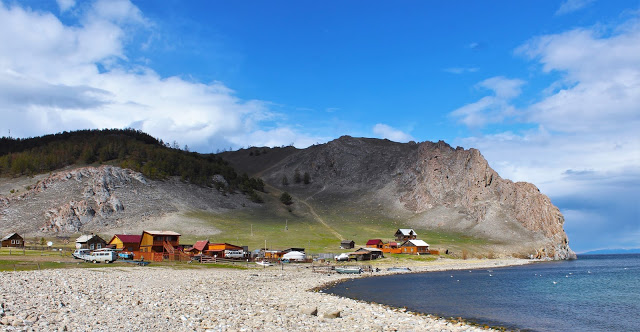The Great Barrier Reef: How to snorkel sustainably
‘The Great Barrier Reef is in grave danger. The twin perils brought by climate change – an increase in the temperature of the ocean and in its acidity – threaten its very existence.’ – Sir David Attenborough
All images in this post are courtesy of Wavelength Cruises.
A natural wonder
The colours were the most vivid and riotous I’d ever seen. I floated in the bath-tub warm water and peered into the depths below, marvelling at the flora and fauna. Small bright fish flashed past, like jewels. Larger fish meandered past more ponderously. Anemones swayed and twisted in the ceaselessly tugging ocean. I was spellbound. It was the last snorkel of the day and while this site lacked the excitement of the previous two – by which I mean that there were no sharks – it was by far the most beautiful.
I twisted this way and that, desperate to soak every single tiny thing up. This was a once in a lifetime opportunity. It was a dream come true to be snorkelling the Great Barrier Reef, one of the world’s most incredible natural wonders. I was overwhelmed by the experience.
Snorkelling is one of my greatest travel pleasures. I love enveloping myself into a world that is so alien to me. I’ve snorkelled in the Philippines and in Jordan, but those occasions paled into comparison out there, as I swam slowly above the Great Barrier Reef. It was on a scale beyond imagination and incomparable to any other reef I’d ever experienced.

The global threats
The Great Barrier Reef is the largest living thing on Earth, visible from outer space. It lies off the coast of Queensland in north-eastern Australia and covers 2,300km. The ecosystem comprises of thousands of reefs and islands and is home to countless marine species. In 1981, it was listed as a UNESCO World Heritage Site.
The Great Barrier Reef is also under a considerable and very real threat, largely posed by rapid human-enhanced global climate change. Climate change affects the reef in several ways, including:
- Increased frequency of severe weather events
- Ocean acidification
- Rising sea temperature
- Rising sea levels
(Source and more information: Great Barrier Reef Foundation.

The local threats
On a more local level, there has been increased deforestation and agriculture in the north Queensland region. This means that there are now more pesticides, fertilizers and other pollutants running off into the ocean than ever before. As such, the already existing climate change issues are being exacerbated, leading to rapid ocean acidification. It is this acidification that leads to coral bleaching.
The local economy relies heavily on reef tourism. Many tour operators are behaving more responsibly nowadays and provide sustainable tours of the reef. However, it’s extremely likely that the human impact of these tours has had a detrimental impact on the reef in the past. After all, reef tourism has been around for decades. It is only in recent years that we’ve learnt that even our sun cream alone has a negative impact on the delicate reef ecosystem.
And all this before you even consider other things like plastic pollution or the impact of fishing. What about the problems caused to the ecosystem when boat anchors are dropped to moor up over the reef? Or the fact that human beings have been taking unsolicited specimens from the reef for years, even after the practice was banned.

A bucket list dream
With all this in mind, why did I decide to take a snorkelling tour while I was in Queensland?
Quite simply, it’s a bucket list dream of mine. I knew I couldn’t go to Queensland and not snorkel the reef. However, I didn’t want add to the threats posed to the reef. It was a conundrum. In the end, I chose to educate myself prior to the trip and I chose a sustainable and eco-friendly tour company to take me out for the day.
Enter Wavelength Reef Cruises.
An eco-friendly tour company
As I browsed Wavelength’s website, it quickly became clear to me that sustainability and ecotourism were foremost in their philosophy. This seemed to be a company that put the reef first, taking every step to try and reduce their impact on this delicate ecosystem.
Not only that, they also went above and beyond to help with reef conservation. Wavelength are involved in a number of conservation projects to help protect endangered species and also help with research on specimens found across the reef. If I needed any further convincing that this was the tour operator for me, their environmental philosophy is posted up on their website in black and white, public for everyone to see. I was sold.
Wavelength operate out of Port Douglas and own a fleet of four boats to take groups of tourists out to explore the Great Barrier Reef. They never take more than forty eight passengers out at once and their tours are strictly snorkelling only – no diving. The crew and staff are all consummate professionals – friendly, helpful and extremely well-informed about the reef. Each tour has a marine biologist on board.
I checked out a few other tour operators in Port Douglas and Wavelength seemed to be the only ones that came across to be so passionately environmental. They have fantastic credentials and philosophies that stood out to me during my research. I booked a day tour without hesitation.

Out on the Great Barrier Reef
I slipped into the silky blue water of the Coral Sea and swam away from the boat, feeling satisfied with how things had turned out. Not only had Wavelength Cruises proved to be the eco-friendly tour of choice, but the staff were also extremely passionate and everything had run like clockwork. We’d had some interesting talks from the on-board marine biologist, eaten a delicious lunch and the weather had been sunny and bright. Apart from an unfortunate bout of seasickness, the day had been pretty much perfect.
Now, I focused my attention on the scenes unfolding below me. I marvelled once more at the incredible hidden world lying only a metre or so below the surface. The Great Barrier Reef felt like a treasure to be kept safe and protected. A whole new planet that we are yet to fully understand.
Seeing the reef for myself and hearing the impassioned talks throughout the day on how and why it is threatened brought everything home for me. I feel pleased that I’ve seen the reef and experienced it for myself, seen first hand some of the damage already wrought. I’ve educated myself and learnt about the threats this delicate ecosystem faces. Spending the day with Wavelength helped me to better understand the impact humans are having on the planet and the changes that are occurring as a result, right in front of our very eyes.

How to visit the Great Barrier Reef sustainably
If you ever get the opportunity, I would urge you to visit the Great Barrier Reef. It is a breathtaking, wonderful experience and you’re sure to create memories that will stay with you for the rest of your life. I can’t recommend it highly enough.
However, if you intend to visit, then I offer a few tips of advice on how to do so as sustainably as possible. The less impact your visit has, the better.
Research
Research your tour operator before you book. Do they seem eco-friendly? Are their conservation credentials posted on their website for everyone to see? What size group do they take? Ask yourself plenty of questions and don’t settle for the first one you see. Personally, I can’t recommend Wavelength Cruises highly enough. I’m so glad we chose them, over other, bigger companies. Our day was impeccably run, from start to finish, and the knowledge and professionalism among the staff was second to none.
Find a small group tour
Choose an operator who takes only small groups out on the reef at any one time. Think fifty people or fewer. Not only does this mean you’ll get a more personal day, but it also means your snorkelling ability can be catered for more easily. Smaller groups cause less immediate impact to the reef too – fewer people swimming about in one spot can only be a good thing, right?

Pick your activity
If you want to snorkel, choose an operator who only runs snorkelling tours. If you are a diver and wish to get further underwater, take a dive tour. Diving and snorkelling are actually very different activities and, as such, require different conditions and sites to be successful and enjoyable. Divers may cause damage to the reef at sites where snorkellers can swim above without any problem. Wavelength explain more about this on their FAQs page.
Choose the right sun cream
Some sun screams contain chemicals that can be toxic to coral. Make sure that when you put sun cream on, it is certified ‘reef safe’. Research your sunscreen before you buy. If in doubt, your tour operator is likely to have some on board, so double check if yours is fine or borrow some of theirs.
Look and observe
You are there as a spectator. It goes without saying that the coral shouldn’t be touched, and absolutely nothing should be taken from the reef.
Listen
The staff on board your vessel are trained professionals with years of marine experience. It’s worth listening to the talks, learning from them and hearing their stories. These are the people seeing what is happening to the reef first hand, and they’re an invaluable resource. Absorb what they have to say and be sure to pass on the knowledge to friends and family members when you’re back home!
Take Responsibility
Think about what you’re doing when you’re in the water and how your actions may have an affect on the reef. If you are with children, make sure they understand the implications their actions may have. Be respectful and have a wonderful time!

Take your new found knowledge home
Being sustainable and eco-friendly doesn’t end when your snorkelling trip does. There is an estimated 12.7 million tonnes of plastic in the world’s oceans right now. We can all play our part in helping to clean up our oceans and reduce the threat of climate change. In turn, we can help protect the fragile ecosystems within the oceans.
I won’t patronise you by suggesting you up your recycling game, use non-plastic straws or stop using single-use plastic bottles. You know all this. What I would say is to take some time to learn more about the oceans and the detrimental effect humans are having on them.
Our impact on the world’s oceans goes far beyond the Great Barrier Reef, although this does feel like the most tangible and biggest loss should things continue the way they are. With education comes understanding. Only then might we have a real chance of saving the oceans, and in turn, the Great Barrier Reef.
As the marine biologist on board our boat said:
‘The media and the government don’t listen when the Australian people tell them that the reef is dying. We need you, our visitors, to go away and share our stories. Tell them that the reef needs to be protected. That it needs to be saved. Then, finally, someone might start paying attention.’

Here are some useful links providing more information, should you wish to find out more.
- Australian Government Department of the Environment and Energy
- Australian Government Great Barrier Reef Marine Park Authority (GBRMPA)
- WWF – The Great Barrier Reef
- Responsible Tourism: Responsible Tourism on the Great Barrier Reef
- Green Tumble: How does tourism affect coral reefs?
- GBRMPA: Tourism on the Great Barrier Reef





2 thoughts on “The Great Barrier Reef: How to snorkel sustainably”